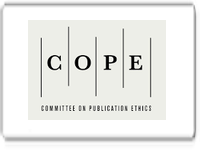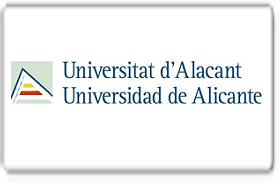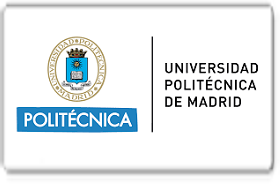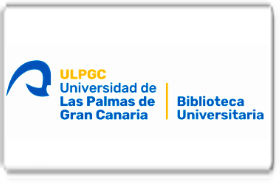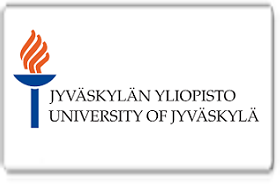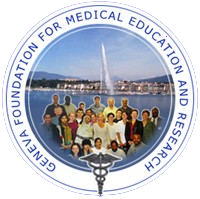Respuesta terapéutica del tratamiento antibiótico concomitante al uso del Bacillus claussi vs Saccharomyces boulardii para el manejo de infecciones intestinales
DOI:
https://doi.org/10.56048/MQR20225.8.3.2024.3005-3028Palabras clave:
Probióticos; Saccharomyces boulardii; Bacillus clausii; infecciones gastrointestinales; resistencia antibióticaResumen
Introducción: Los probióticos son microorganismos, principalmente bacterias y hongos, que cumplen varias funciones beneficiosas que aportan a la salud, sirviendo de complemento para el tratamiento de diversas enfermedades como las gastrointestinales, por tal razón, constituyen una nueva herramienta terapéutica para el cuidado de la salud humana, sin embargo, la eficacia de estos probióticos depende de varias variables. La presente revisión bibliográfica se centra en describir los efectos terapéuticos del uso de Bacillus clausii y Saccharomyces boulardii en el tratamiento multimodal complementario en infecciones intestinales.
Metodología: Para la presente revisión bibliográfica se analizó estudios científicos de alta relevancia en bases de datos internacionales como Dialnet, Redalyc, Scopus, ScienceDirect y Pubmed publicados en los últimos años. Se realizó el análisis de ensayos clínicos, revisiones sistemáticas, ensayos controlados aleatorizados y metaanálisis enfocados en los probióticos Bacillus clausii y Saccharomyces boulardii.
Resultados: Los resultados de esta revisión revelan que el probiótico bacteriano (Bacillus clausii) presenta resistencia a antibióticos de amplio espectro proveída por genes de su genoma, por otro lado, el probiótico a base del hongo (Saccharomyces boulardii) presenta una resistencia intrínseca a los antibióticos por sus propiedades naturales, resultando que ambos pueden ser usados junto con antibióticos para tratar infecciones gastrointestinales, se identificó los mecanismos de acción, y en que enfermedades gastrointestinales tienen mayor utilidad.
Conclusión: El uso de los probióticos Bacillus clausii y Saccharomyces boulardii han demostrado ser eficaces en el tratamiento multimodal junto con antibióticos en el manejo de las enfermedades gastrointestinales, sin embargo, revelan estudios una superioridad del Saccharomyces boulardii.
Descargas
Métricas
Cited
DOI: 10.56048![]()
Citas
Acosta-Rodríguez-Bueno, C. P., Abreu y Abreu, A. T., Guarner, F., Guno, M. J. V., Pehlivanoğlu, E., & Perez, M. (2022). Bacillus clausii for Gastrointestinal Disorders: A Narrative Literature Review. Advances in Therapy, 39(11), 4854–4874. https://doi.org/10.1007/S12325-022-02285-0
Albert De La Torre, L., & Es], L. (2019). Gastroenteritis aguda. http://infodoctor.org/gipi/guia_abe/
Altcheh, J., Carosella, M. V., Ceballos, A., D’Andrea, U., Jofre, S. M., Marotta, C., Mugeri, D., Sabbaj, L., Soto, A., Josse, C., Montestruc, F., & McFarland, L. V. (2022). Randomized, direct comparison study of Saccharomyces boulardii CNCM I-745 versus multi-strained Bacillus clausii probiotics for the treatment of pediatric acute gastroenteritis. Medicine (United States), 101(36), E30500. https://doi.org/10.1097/MD.0000000000030500
Álvarez, J., Fernández Real, J. M., Guarner, F., Gueimonde, M., Rodríguez, J. M., Saenz de Pipaon, M., & Sanz, Y. (2021). Gut microbes and health. In Gastroenterologia y Hepatologia (Vol. 44, Issue 7, pp. 519–535). Ediciones Doyma, S.L. https://doi.org/10.1016/j.gastrohep.2021.01.009
Arasaradnam, R. P., Brown, S., Forbes, A., Fox, M. R., Hungin, P., Kelman, L., Major, G., Sanders, D. S., Sinha, R., Charles Smith, S., Thomas, P., & F Walters, J. R. (2018). Guidelines for the investigation of chronic diarrhoea in adults: British Society of Gastroenterology, 3rd edition. Gut, 67, 1380–1399. https://doi.org/10.1136/gutjnl-2017-315909
Balsalobre-Arenas, L., & Alarcón-Cavero, T. (2017). Rapid diagnosis of gastrointestinal tract infections due to parasites, viruses, and bacteria. Enfermedades Infecciosas y Microbiologia Clinica, 35(6), 367–376. https://doi.org/10.1016/j.eimc.2017.01.002
Barea A Raúl, A., Salazar, Dory Esther, A., Subieta Carlos Jaime, V., Hoyos Inti, F., & Mercado GustavoMD, E. (2019). ENFERMEDAD INTESTINAL INFECCIOSA (DIARREA). In Rev Med La Paz (Issue 1).
Binnicker, M. J. (2015). Multiplex molecular panels for diagnosis of gastrointestinal infection: Performance, result interpretation, and cost-effectiveness. Journal of Clinical Microbiology, 53(12), 3723–3728. https://doi.org/10.1128/JCM.02103-15/ASSET/32F06F2F-E990-47F3-A2DA-31A5ED678E8A/ASSETS/GRAPHIC/ZJM9990945740002.JPEG
Cheng, J., & Ouwehand, A. C. (2020). Gastroesophageal reflux disease and probiotics: A systematic review. In Nutrients (Vol. 12, Issue 1). MDPI AG. https://doi.org/10.3390/nu12010132
Ckf, L., GoldenbergJZ, J. B., & Probiotics, J. (2017). Cochrane Library Cochrane Database of Systematic Reviews Probiotics for the prevention of Clostridium diicile-associated diarrhea in adults and children (Review) Probiotics for the prevention of Clostridium diicile-associated diarrhea in adults and children (Review). https://doi.org/10.1002/14651858.CD006095.pub4
Cong, L., Chen, C., Mao, S., Han, Z., Zhu, Z., & Li, Y. (2023). Intestinal bacteria—a powerful weapon for fungal infections treatment. In Frontiers in Cellular and Infection Microbiology (Vol. 13). Frontiers Media S.A. https://doi.org/10.3389/fcimb.2023.1187831
Czerucka, D., & Rampal, P. (2019). Diversity of Saccharomyces boulardii CNCM I-745 mechanisms of action against intestinal infections. World Journal of Gastroenterology, 25(18), 2188–2203. https://doi.org/10.3748/wjg.v25.i18.2188
De Castro, J. A., Kesavelu, D., Lahiri, K. R., Chaijitraruch, N., Chongsrisawat, V., Jog, P. P., Liaw, Y. H., Nguyen, G. K., Nguyen, T. V. H., Pai, U. A., Phan, H. N. D., Quak, S. H., Tanpowpong, P., & Guno, M. J. (2020). Recommendations for the adjuvant use of the poly-antibiotic–resistant probiotic Bacillus clausii (O/C, SIN, N/R, T) in acute, chronic, and antibiotic-associated diarrhea in children: consensus from Asian experts. In Tropical Diseases, Travel Medicine and Vaccines (Vol. 6, Issue 1). BioMed Central Ltd. https://doi.org/10.1186/s40794-020-00120-4
Delbaere, K., Roegiers, I., Bron, A., Durif, C., Van De Wiele, T., Blanquet-Diot, S., & Marinelli, L. (2023). The small intestine: Dining table of host-microbiota meetings. In FEMS Microbiology Reviews (Vol. 47, Issue 3). Oxford University Press. https://doi.org/10.1093/femsre/fuad022
Elshaghabee, F. M. F., Rokana, N., Gulhane, R. D., Sharma, C., & Panwar, H. (2017). Bacillus as potential probiotics: Status, concerns, and future perspectives. In Frontiers in Microbiology (Vol. 8, Issue AUG). Frontiers Media S.A. https://doi.org/10.3389/fmicb.2017.01490
Fernández-Bañares, F., Accarino, A., Balboa, A., Domènech, E., Esteve, M., Garcia-Planella, E., Guardiola, J., Molero, X., Rodríguez-Luna, A., Ruiz-Cerulla, A., Santos, J., & Vaquero, E. (2016). Diarrea crónica: definición, clasificación y diagnóstico. In Gastroenterologia y Hepatologia (Vol. 39, Issue 8, pp. 535–559). Ediciones Doyma, S.L. https://doi.org/10.1016/j.gastrohep.2015.09.018
García-Compeán, D., & Jaquez-Quintana, J. (2011). Infecciones Gastrointestinales. https://www.researchgate.net/publication/291347607
Gómez-Escudero, O., & Remes-Troche, J. M. (2021). Abordaje de la diarrea crónica en el adulto: Revisión de la literatura. Revista de Gastroenterología de México, 86(4), 387–402. https://doi.org/10.1016/J.RGMX.2021.02.002
Guan, Q. (2019). A Comprehensive Review and Update on the Pathogenesis of Inflammatory Bowel Disease. Journal of Immunology Research, 2019. https://doi.org/10.1155/2019/7247238
Gueimonde, M., Sánchez, B., de los Reyes-Gavilán, C. G., & Margolles, A. (2013). Antibiotic resistance in probiotic bacteria. In Frontiers in Microbiology (Vol. 4, Issue JUL). Frontiers Research Foundation. https://doi.org/10.3389/fmicb.2013.00202
Hungin, A. P. S., Mitchell, C. R., Whorwell, P., Mulligan, C., Cole, O., Agréus, L., Fracasso, P., Lionis, C., Mendive, J., Philippart de Foy, J. M., Seifert, B., Wensaas, K. A., Winchester, C., & de Wit, N. (2018). Systematic review: probiotics in the management of lower gastrointestinal symptoms – an updated evidence-based international consensus. In Alimentary Pharmacology and Therapeutics (Vol. 47, Issue 8, pp. 1054–1070). Blackwell Publishing Ltd. https://doi.org/10.1111/apt.14539
Ibáñez, L., Pontier-Bres, R., Larbret, F., Rekima, A., Verhasselt, V., Blin-Wakkach, C., & Czerucka, D. (2019). Saccharomyces boulardii strain CNCM I-745 modifies the mononuclear phagocytes response in the small intestine of mice following salmonella typhimurium infection. Frontiers in Immunology, 10(APR). https://doi.org/10.3389/fimmu.2019.00643
Ilinskaya, O. N., Ulyanova, V. V., Yarullina, D. R., & Gataullin, I. G. (2017). Secretome of Intestinal bacilli: A natural guard against pathologies. Frontiers in Microbiology, 8(SEP). https://doi.org/10.3389/FMICB.2017.01666
Kabbani, T. A., Pallav, K., Dowd, S. E., Villafuerte-Galvez, J., Vanga, R. R., Castillo, N. E., Hansen, J., Dennis, M., Leffler, D. A., & Kelly, C. P. (2017). Prospective Randomized Controlled Study on the Effects of Saccharomyces boulardii CNCM I-745 and Amoxicillin-Clavulanate or the Combination on the Gut Microbiota of Healthy Volunteers. https://doi.org/10.1080/19490976.2016.1267890
Kaźmierczak-Siedlecka, K., Ruszkowski, J., Fic, M., Folwarski, M., & Makarewicz, W. (2020). Saccharomyces boulardii CNCM I-745: A Non-bacterial Microorganism Used as Probiotic Agent in Supporting Treatment of Selected Diseases. In Current Microbiology (Vol. 77, Issue 9, pp. 1987–1996). Springer. https://doi.org/10.1007/s00284-020-02053-9
Kharwar, A., Bazaz, M. R., & Dandekar, M. P. (2022). Quantitative and qualitative characterization of commercially available oral suspension of probiotic products containing Bacillus Clausii spores. BMC Microbiology, 22(1). https://doi.org/10.1186/s12866-022-02631-w
Khatri, A. M., Rai, S., Shank, C., McInerney, A., Kaplan, B., Hagmann, S. H. F., & Kainth, M. K. (2021). A tale of caution: prolonged Bacillus clausii bacteraemia after probiotic use in an immunocompetent child. Access Microbiology, 3(3). https://doi.org/10.1099/acmi.0.000205
Khatri, I., Sharma, G., & Subramanian, S. (2019). Composite genome sequence of Bacillus clausii, a probiotic commercially available as Enterogermina®, and insights into its probiotic properties. BMC Microbiology, 19(1). https://doi.org/10.1186/s12866-019-1680-7
Khatri, I., Tomar, R., Ganesan, K., Prasad, G. S., & Subramanian, S. (2017). Complete genome sequence and comparative genomics of the probiotic yeast Saccharomyces boulardii. Scientific Reports, 7(1). https://doi.org/10.1038/s41598-017-00414-2
Kumar Yadav, M., Kumari, I., Singh, B., Kant Sharma, K., & Kumar Tiwari, S. (2022). Probiotics, prebiotics and synbiotics: Safe options for next-generation therapeutics. https://doi.org/10.1007/s00253-021-11646-8
La Hoz, R. M., & Morris, M. I. (2019). Intestinal parasites including Cryptosporidium, Cyclospora, Giardia, and Microsporidia, Entamoeba histolytica, Strongyloides, Schistosomiasis, and Echinococcus: Guidelines from the American Society of Transplantation Infectious Diseases Community of Practice. Clinical Transplantation, 33(9). https://doi.org/10.1111/CTR.13618
Laura Moreno, M. (2020). Abordaje diagnóstico de la diarrea crónica. In Acta Gastroenterol Latinoam (Vol. 50, Issue 4).
lkopp. (2023). Guía Práctica de la Organización Mundial de Gastroenterología: Probióticos y prebióticos WGO Practice Guideline: Probiotics and prebiotics.
M., R. A. (2015). ACUTE DIARRHEA. Revista Medica Clinica Las Condes, 26(5), 676–686. https://doi.org/10.1016/j.rmclc.2015.09.010
Markowiak, P., & Ślizewska, K. (2017). Effects of probiotics, prebiotics, and synbiotics on human health. In Nutrients (Vol. 9, Issue 9). MDPI AG. https://doi.org/10.3390/nu9091021
McFarland, L. V., Srinivasan, R., Setty, R. P., Ganapathy, S., Bavdekar, A., Mitra, M., Raju, B., & Mohan, N. (2021). Specific Probiotics for the Treatment of Pediatric Acute Gastroenteritis in India: A Systematic Review and Meta-Analysis. JPGN Reports, 2(3), e079. https://doi.org/10.1097/pg9.0000000000000079
Mejia-Montilla, J., Reyna-Villasmil, N., Bravo-Henríquez, A., Fernández-Ramírez, A., & Reyna-Villasmil, E. (2021). Fármacos de uso común y disbiosis de la microbiota intestinal (Commonly used drugs and dysbiosis of the intestinal microbiota) Resumen(español).
Moré, M. I., & Vandenplas, Y. (2018). Saccharomyces boulardii CNCM I-745 Improves Intestinal Enzyme Function: A Trophic Effects Review. In Clinical Medicine Insights: Gastroenterology (Vol. 11). SAGE Publications Ltd. https://doi.org/10.1177/1179552217752679
Ministerio de Salud Pública. Dirección Nacional Vigilancia Epidemiológica (2021). casos de infecciones gastrointestinales trasmitidos por agua y alimentos contaminados https://www.who.int/foodsafety/publications/foodborne_disease/fergreport/es/
Naomi, R., Embong, H., Othman, F., Ghazi, H. F., Maruthey, N., & Bahari, H. (2022). Probiotics for alzheimer’s disease: A systematic review. In Nutrients (Vol. 14, Issue 1). MDPI. https://doi.org/10.3390/nu14010020
Neut, C., Mahieux, S., & Dubreuil, L. J. (2017). Antibiotic susceptibility of probiotic strains: Is it reasonable to combine probiotics with antibiotics? Medecine et Maladies Infectieuses, 47(7), 477–483. https://doi.org/10.1016/j.medmal.2017.07.001
Pontier-Bres, R., Rampal, P., Peyron, J. F., Munro, P., Lemichez, E., & Czerucka, D. (2015). The Saccharomyces boulardii CNCM I-745 strain shows protective effects against the B. anthracis LT toxin. Toxins, 7(11), 4455–4467. https://doi.org/10.3390/toxins7114455
Princess, I., Natarajan, T., & Ghosh, S. (2020). When good bacteria behave badly: a case report of Bacillus clausii sepsis in an immunocompetant adult. Access Microbiology, 2(4). https://doi.org/10.1099/acmi.0.000097
Reuben, R. C., & Torres, C. (2024). Bacteriocins: potentials and prospects in health and agrifood systems. In Archives of Microbiology (Vol. 206, Issue 5). Springer Science and Business Media Deutschland GmbH. https://doi.org/10.1007/s00203-024-03948-y
Riddle, M. S., Dupont, H. L., & Connor, B. A. (2016). ACG clinical guideline: Diagnosis, treatment, and prevention of acute diarrheal infections in adults. In American Journal of Gastroenterology (Vol. 111, Issue 5, pp. 602–622). Nature Publishing Group. https://doi.org/10.1038/ajg.2016.126
Santacroce, L., Charitos, I. A., & Bottalico, L. (2019). A successful history: probiotics and their potential as antimicrobials. In Expert Review of Anti-Infective Therapy (Vol. 17, Issue 8, pp. 635–645). Taylor and Francis Ltd. https://doi.org/10.1080/14787210.2019.1645597
Sarwska Jolanta, Choroszky Krol Irena, Regulska Bozena, Frej Madrzak Magdalena, Jama Kmiecik Agnieszka (2013). The therapeutic effect of probiotic bacteria on gastrointestinal diseases. PubMed. From https://pubmed.ncbi.nlm.nih.gov/24285463/
Sokic-Milutinovic, A., Pavlovic-Markovic, A., Tomasevic, R. S., & Lukic, S. (2022). Diarrhea as a Clinical Challenge: General Practitioner Approach. In Digestive Diseases (Vol. 40, Issue 3, pp. 282–289). S. Karger AG. https://doi.org/10.1159/000517111
Soni, J., Sinha, S., & Pandey, R. (2024). Understanding bacterial pathogenicity: a closer look at the journey of harmful microbes. In Frontiers in Microbiology (Vol. 15). Frontiers Media SA. https://doi.org/10.3389/fmicb.2024.1370818
Sundin, O. H., Mendoza-Ladd, A., Zeng, M., Diaz-Arévalo, D., Morales, E., Fagan, B. M., Ordoñez, J., Velez, P., Antony, N., & McCallum, R. W. (2017). The human jejunum has an endogenous microbiota that differs from those in the oral cavity and colon. BMC Microbiology, 17(1). https://doi.org/10.1186/s12866-017-1059-6
Terciolo, C., Dapoigny, M., & Andre, F. (2019). Beneficial effects of Saccharomyces boulardii CNCM I-745 on clinical disorders associated with intestinal barrier disruption. In Clinical and Experimental Gastroenterology (Vol. 12, pp. 67–82). Dove Medical Press Ltd. https://doi.org/10.2147/CEG.S181590
Vila, J., Álvarez-Martínez, M. J., Buesa, J., & Castillo, J. (2009). Microbiological diagnosis of gastrointestinal infections. In Enfermedades Infecciosas y Microbiologia Clinica (Vol. 27, Issue 7, pp. 406–411). Ediciones Doyma, S.L. https://doi.org/10.1016/j.eimc.2008.11.009
Vineeth, S., Saireddy, S., Keerthi, T., & Mantada, P. K. (2017). Efficacy of Bacillus clausii and Saccharomyces boulardii in Treatment of Acute Rotaviral Diarrhea in Pediatric Patients. Indonesian Journal of Clinical Pharmacy, 6(2), 91–98. https://doi.org/10.15416/ijcp.2017.6.2.91
Wieërs, G., Belkhir, L., Enaud, R., Leclercq, S., Philippart de Foy, J. M., Dequenne, I., de Timary, P., & Cani, P. D. (2020). How Probiotics Affect the Microbiota. In Frontiers in Cellular and Infection Microbiology (Vol. 9). Frontiers Media S.A. https://doi.org/10.3389/fcimb.2019.00454
Wilson Acebo, D. B., Campozano Villacreses, J. M., & Zambrano Macías, C. (2023). Etiología de las infecciones gastrointestinales y el diagnóstico de laboratorio: Prevalencia actual. MQRInvestigar, 7(1), 1048–1062. https://doi.org/10.56048/mqr20225.7.1.2023.1048-1062
Publicado
Cómo citar
Número
Sección
Categorías
Licencia

Esta obra está bajo una licencia internacional Creative Commons Atribución 4.0.
Los autores se comprometen a respetar la información académica de otros autores, y a ceder los derechos de autor a la Revista MQRInvestigar, para que el artículo pueda ser editado, publicado y distribuido. El contenido de los artículos científicos y de las publicaciones que aparecen en la revista es responsabilidad exclusiva de sus autores. La distribución de los artículos publicados se realiza bajo una licencia 


















